Today we will compare 5 excellent thermal cameras from the two best manufacturers on the market. The Seek Shot and Seek Shot Pro pocket cameras vs the Flir C3 and C5 pocket cameras. And to spice up the mix, we added the Compact Pro, a smartphone thermal imager to see how it fares against the pocket models
We look at everything from infrared resolution, how the image looks in reality to certain useful software features
Here is our review and comparison table of the Seek Shot vs Shot Pro vs Compact Pro vs Flir C3 vs C5.
We look at everything from infrared resolution, how the image looks in reality to certain useful software features
Here is our review and comparison table of the Seek Shot vs Shot Pro vs Compact Pro vs Flir C3 vs C5.
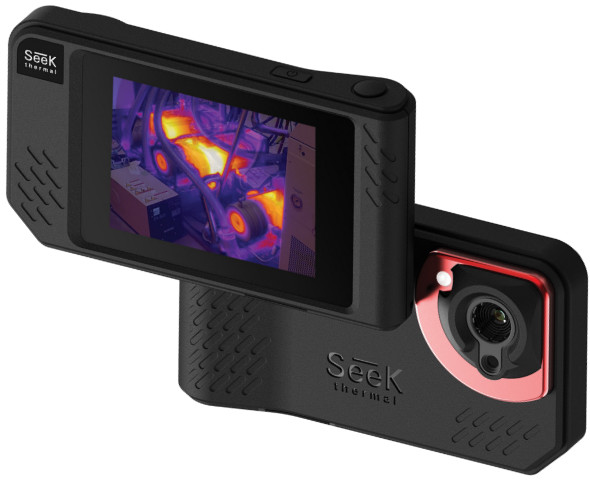
| Product | Type | Resolution | Battery capacity | Waterproof | LCD screen | Price |
|---|---|---|---|---|---|---|
Seek Shot 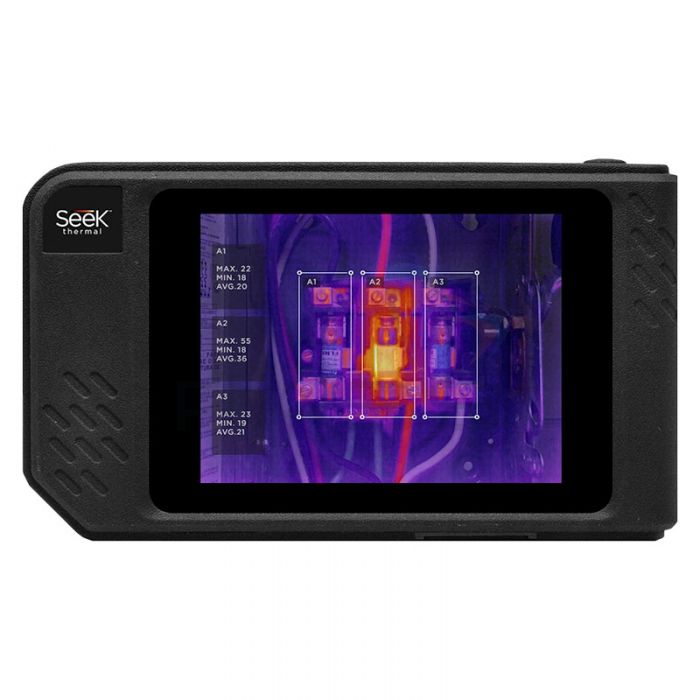 | Handheld | 206 x 156 | Li-Ion, 4 hours | No | 3.5″ | Click for more info |
Seek ShotPro 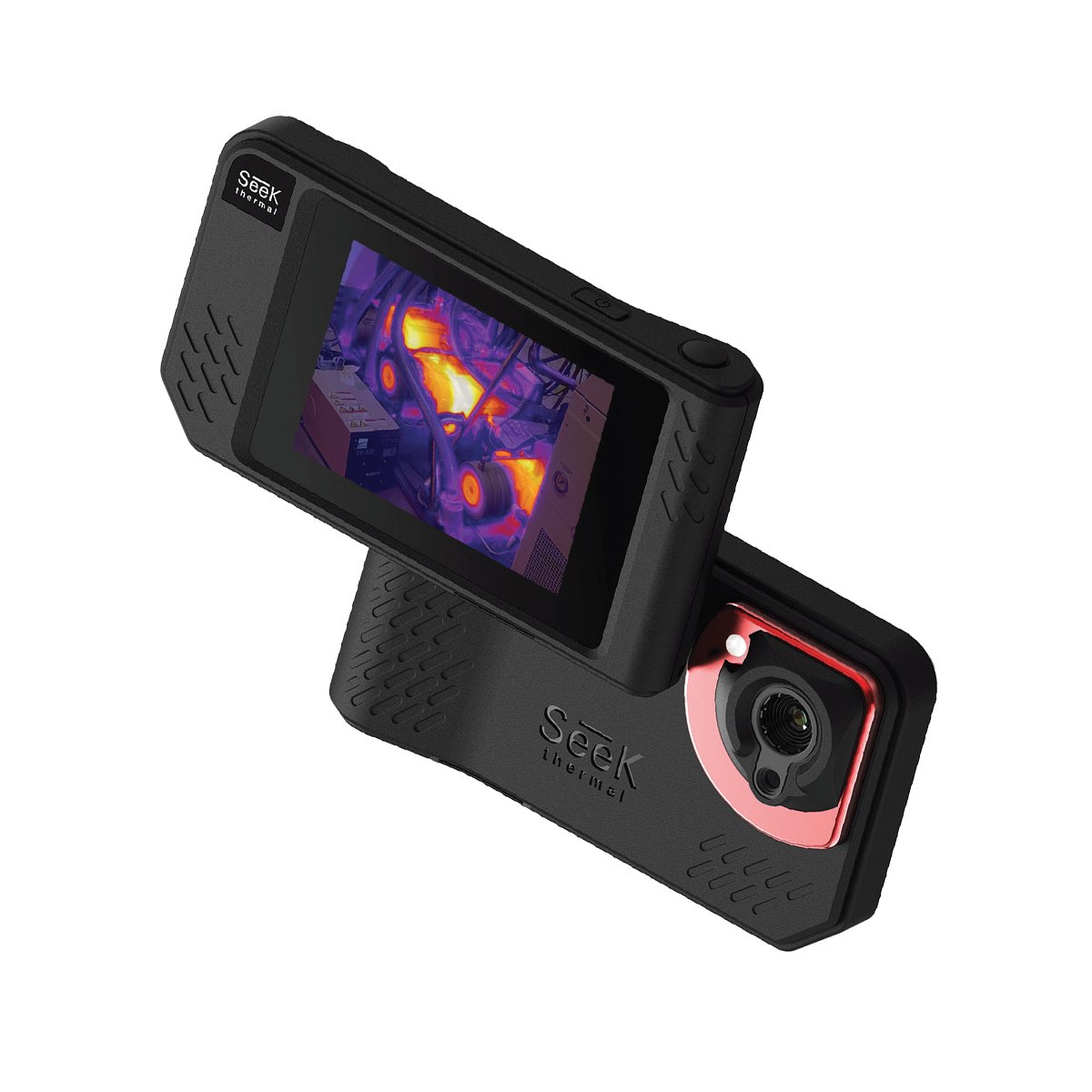 | Handheld | 320 x 240 | 4 hours | Yes | 3.5″ | Click for more info |
Seek Thermal Compact PRO 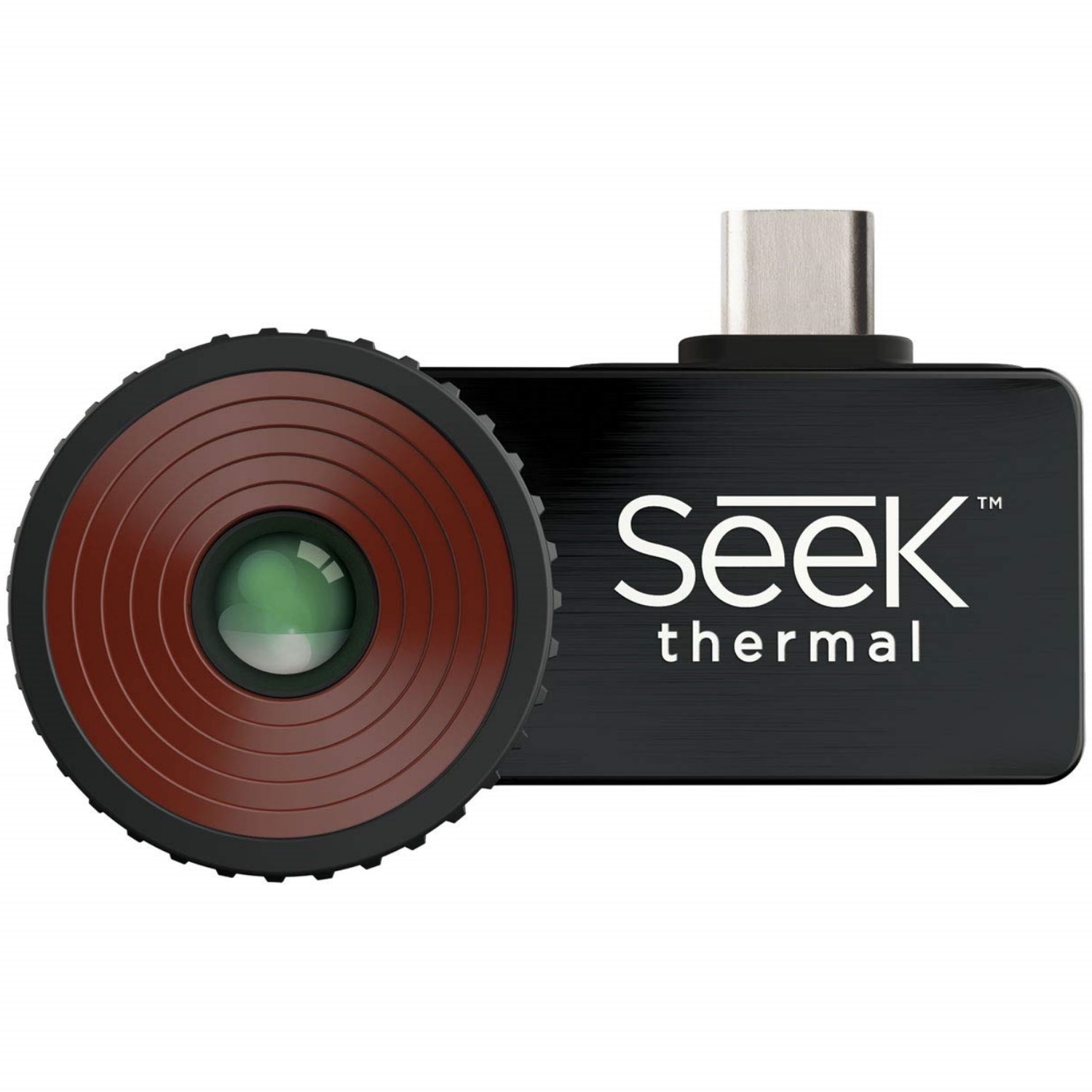 | Smartphone | 320 x 240 | No | Yes | No | Click for more info |
FLIR C3  | Handheld | 80 x 60 | 2 hours | No | 3″ | Click for more info |
FLIR C5 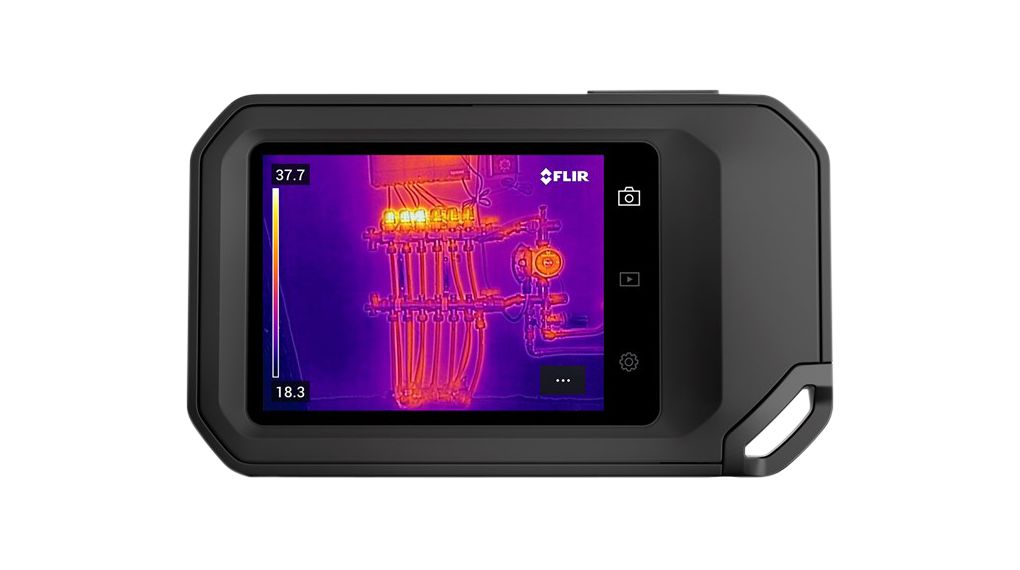 | Handheld | 160 x 120 | 4 hours | Yes | 3.5″ | Click for more info |
Let’s have a look at each product in particular.
Seek Shot
| Product | Type | Resolution | Battery capacity | Waterproof | LCD screen | Price |
|---|---|---|---|---|---|---|
Seek Shot  | Handheld | 206 x 156 | Li-Ion, 4 hours | No | 3.5″ | Click for more info |
This camera comes with Wi-fi and USB connectivity so that you can connect it to your PC to download the captured thermal images but also send them to your smartphone using the SeekView app for iPhone and Android.
What sets this apart from Flir cameras is that it can use the wi-fi connection to stream video. If you mount this on a tripod, you can turn this into a temperature monitoring device.
In terms of resolution, it doesn’t let down with an IR resolution of 206 x 156 totaling 32,136 pixels. This infrared sensor is also supported by a visual camera for image enhancement using the SeekFusion technology.
The temperature range which you can measure is from -40 to 626°F (-40 to 330°C). This is wide enough for most applications like HVAC inspections, leak or moisture detection in plumbing, roofing, construction and automotive diagnostics.
This thermal imaging camera has a 4GB internal storage (No SD Card support) and its rechargeable battery offers 4 hours of battery life.
One minus for this camera is that it is not waterproof or dustproof, something that the ShotPro and Flir C5 offer. In terms of software, you get 3 spot measurements, a range of color palettes and adjustable emissivity.
Seek ShotPro
| Product | Type | Resolution | Battery capacity | Waterproof | LCD screen | Price |
|---|---|---|---|---|---|---|
Seek ShotPro  | Handheld | 320 x 240 | 4 hours | Yes | 3.5″ | Click for more info |
This is also a great IR thermal imager for home inspections which can be used as a night vision device if needed or even to monitor body temperature.
Seek Thermal Shot vs Seek Thermal Shot Pro
The Seek ShotPro offers a higher infrared resolution of 320 x 240 compared to the 206 x 156 that the standard Seek Shot offers. This might not seem like a big difference, but the Pro outputs more than twice the number of pixels and thus better image quality.Another main advantage that the Shot Pro has is the fact that it has an IP54 rating and is waterproof and dustproof. You can splash it with water and it will continue to function, however don’t immerse it in water.
The Seek Thermal ShotPro also offers a wider viewing angle with a 57° field of view compared to the 36° view angle that the standard Seek Shot offers. Both handheld thermal cameras offer 8 color palettes, 4GB of image storage, a 3.5″ LCD touchscreen, image capture and wi-fi video streaming.
The Seek Shot Pro costs 200$ more than the Seek Shot.
Seek Thermal Compact PRO
| Product | Type | Resolution | Battery capacity | Waterproof | LCD screen | Price |
|---|---|---|---|---|---|---|
Seek Thermal Compact PRO  | Smartphone | 320 x 240 | No | Yes | No | Click for more info |
Seek Shot Pro vs Seek Thermal Compact Pro
The main difference between these two thermal imagers is their function. The Shot Pro is meant to be handheld and can work standalone, while the Compact Pro has to be attached to a smartphone in order to work.The Shot Pro has its own visual camera, battery, internal memory and LCD screen while the Seek CompactPro uses the smartphone’s components for all of these. The Shot Pro has a longer 4-hour battery life while the Compact Pro is reported to work only up to 2 hours on most smartphones.
Then there is the IP 54 rating where the Seek ShotPro is waterproof and can withstand splashes of water and dirt, while the CompactPro has no kind of protection. The ShotPro also offers a wider viewing angle of 57° compared to just 32° on the mobile version.
Both have a 320 x 240 thermal sensors, the same temperature range and sensitivity, however we would recommend the ShotPro for professional use as we found the thermal images to be sharper and more detailed. The SeekFusion technology also works better on the Shot Pro because the cameras are much better aligned, while on the thermal imaging camera for ios and Android, not so much. You always need to realign them from the app.
FLIR C3
| Product | Type | Resolution | Battery capacity | Waterproof | LCD screen | Price |
|---|---|---|---|---|---|---|
FLIR C3  | Handheld | 80 x 60 | 2 hours | No | 3″ | Click for more info |
Seek Shot vs Flir C3
Given that the Flir C3 thermal imaging camera is an older model, the Seek Shot is superior in many ways. First, there is the IR resolution, where the Seek Shot offers a 206 x 156 thermal resolution compared to just 80 x 60 on the C3. That means approximately 6 times more detail.The temperature range is much wider on the Seek shot ranging between -40 ->626°F (-40 to 330°C) compared to the 13 ->302°F(-10 to 150°) that the C3 offers. But it is worth pointing out that the C3 has a temperature measurement accuracy of +/-2°C. The internal memory on the Seek Shot is also larger and the battery lasts twice as long. The Flir C3 offers MSX image enhancement while the Seek offers SeekFusion and between those two, we always preferred the image from the MSX algorithm. MSX overlaps the visual image and thermal image in an intelligent way to improve the image quality.
While both handheld infrared thermal imaging cameras can connect via Wi-fi, the Seek Shot can also stream video via wireless connection, while the C3 can only do it via USB.
The Flir offers a 2-10 warranty option with 2 years for the device and 10 years for the infrared sensor.
Seek ShotPro vs Flir C3
The Seek ShotPro is superior in several ways to the Flir C3. First, the infrared resolution is almost 16 times higer. The ShotPro has a 320 x 240 pixels resolution while the C3 only has an 80 x 60 sensor.The ShotPro’s temperature range is much wider from -40 to 626 °F (-40 to 330° C). Both thermal imaging cameras are equipped with a wireless connection, but the ShotPro makes better use of it by streaming video, while the C3 can only do that via the USB cable. The ShotPro has a longer 4 hour battery life and a bigger LCD screen (3.5″ compared to 3.0″ on the C3).
Last but certainly not least, the Seek Shot Pro compact thermal imaging camera is IP-54 rated and can withstand water dirt, sand and dust while the C3 offers no kind of protection from that.
FLIR C5
| Product | Type | Resolution | Battery capacity | Waterproof | LCD screen | Price |
|---|---|---|---|---|---|---|
FLIR C5  | Handheld | 160 x 120 | 4 hours | Yes | 3.5″ | Click for more info |
Along with USB and Wi-fi, it also offers bluetooth connectivity. It can capture thermal images and record videos and it can store them automatically on the new Flir Ignite cloud, the first cloud storage platform for thermal images. This is a first for thermal cameras and we see this as the future for this field.
It can also received OTA firmware updates automatically without the need to connect it to your PC or smartphone.
Flir C5 vs Seek Shot Pro
The first thing that is different about these two infrared cameras is the infrared resolution. The ShotPro has a 320 x 240 IR sensor, while the C5 only has a 160 x 120 thermal resolution.The difference in detail is considerable, but it is narrowed by the C5’s MSX technology and especially its 5 megapixel visual camera compared to the 640 x 480 camera you get on the ShotPro. And in reality, we prefer the infrared images on the C5, they have less noise and are sharper. The MSX image mode really makes a big difference in infrared thermography. The C5 also comes with some powerful tools like the reporting software (Flir Tools).
The C5 has the upper edge in thermal scope from -4 to 752°F (-20 to 400°C) and also a very slight edege in thermal sensitivity (It reacts to a 0.05°C temperature difference compared to 0.07°C).
The battery life is similar and also the connectivity options with the C5 having an additional option: Bluetooth. But the C5 has three key advantages in the form of Cloud connectivity, OTA firmware updates and its desktop app which makes it easy to generate reports.
Then there is the Span/Level function on the C5 in which you can just tap on an object to adjust the temperature scale and highlight it, something that is very convenient.
Both thermal vision cameras have the same 9hz refresh rate. The reason the framerate is so low is because of EAR export regulations in the US.
Flir also makes the E-series models like the Flir E4, the Flir E6 and the E8 which are great for professional home inspectors, but there are also some entry-level Flir Thermal Cameras like the Flir TG165 spot thermal camera. All of these have a different form factor, because they basically look like an infrared thermometer.
Our Score
